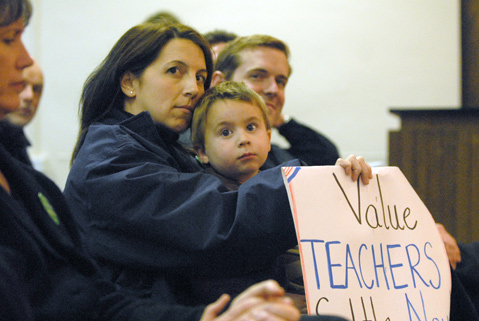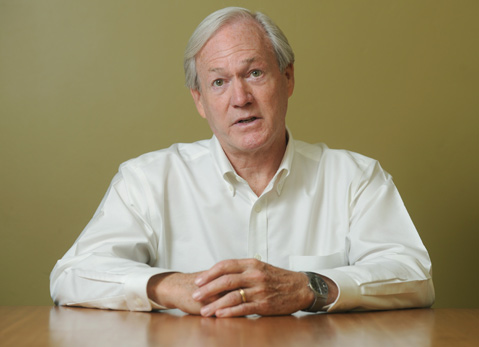Teacher Tenure Struck Down
Landmark Ruling Looks to Weed Lemons from Public Education

School may be out for summer, but a passionate debate about teacher tenure is still in session. Last week, a Los Angeles Superior Court judge struck down job-protection laws deeply embedded in public education.
Beginning in late January, the trial saw two months of mixed testimonies. The plaintiffs argued that five statutes protecting K-12 teacher jobs are cumbersome, handcuff superintendents, and deny students access to equitable education. On the opposing end, attorneys for the State of California and its teachers’ union argued that the lawsuit brought forward by nine student plaintiffs was a misguided attack that does not address systemic problems that plague public schools.
Though the ruling in Vergara v. California has not yet taken effect and will likely be hashed out in an appeal, the groundbreaking verdict has riled up educators and politicians and resumed an age-old discussion. At the crux of Judge Rolf Treu’s decision is the notion that the worst teachers are unduly situated in schools serving underrepresented pupils. Treu cited evidence that 1-3 percent of California’s 275,000 tenured teachers are “grossly ineffective”; California is one of only five states with a probationary period of two years or less and one of 10 states that works on a “last in, first out” principle; the entire dismissal process takes two to 10 years and can cost hundreds of thousands of dollars; additionally, all public employees are still protected by “Skelly Rights,” which requires a pre-disciplinary hearing before termination.
Contrary to popular belief, it’s not impossible to fire tenured teachers, but the dismissal process is rarely completed. A number of off-the-record interviews indicated that perhaps just one teacher had been successfully terminated in the last several years in Santa Barbara. “You get gun-shy,” said Unified School District Boardmember Ed Heron. “It is just too costly and timely. So it happens in other ways — encourage people to retire or resign their position.” For Santa Barbara teachers, the dismissal process begins by being referred to Peer Assistance and Review (PAR), which is a coaching program that many districts pay for. Approximately five teachers are referred to PAR annually, according to Margaret Christensen, director of Human Resources.
But teachers’ union leaders across the country have scorned the judge’s decision, contending that the plaintiffs are actually fronts for Silicon Valley bigwigs, who, despite scarce classroom experience, seek to privatize education. “The union is not here to protect bad teachers,” said Santa Barbara Teachers Association President John Houchin. “Every two years, teachers are evaluated for performance, based on six teaching standards.”
Reaction to the decision has united traditional political foes — conservatives who have long bashed the premise of public-employee unions and social-justice activists who advocate for minority communities. Treu stated that the ruling does not seek to address the issue’s political aspects but focuses on the legal ones, and may require state legislators to start writing new laws if upheld.

Origin of Tenure
The person behind the two-year probationary period in California is Gary K. Hart, former state legislator for Santa Barbara and founder of an institute for education reform. “I personally feel that it is an important decision because it will force a public debate that is long overdue,” Hart said of the ruling. In 1983, Hart authored a hefty package of education reform bills — securing bipartisan support and money for schools — which shrunk the probationary period from three years to two. Before 1983, administrators had a difficult time terminating even probationary teachers, but because of the measure, they were given a window to dismiss without the laborious process.
Always controversial, tenure in education strengthened in the 1960s, but it dates back to the turn of the 20th century when teachers were dismissed for arcane reasons. As the California law currently stands, new teachers must either be dismissed or granted permanent status within the first two years on the job. However, administrators have to grant tenure within 18 months because the decision not to “reelect” a probationary educator must be made before the state deadline of March 15.
One consequence is that administrators may opt to dismiss new teachers whom they may have been on the fence about, leaving fresh educators with potential without work. “There’s got to be a better way,” Heron added. “Obviously it can’t be personal. There’s got to be a systematic way to evaluate the teaching pool.” In the past two years, 20 probationary teachers in the Santa Barbara Unified School District have been dismissed before their permanent status kicked in.
Complicating the matter further, the district currently employs 48 temporary teachers, whose salaries are paid for by “soft” money. These instructors receive “end-of-assignment” notices every March and must wait until the next year’s budget is finalized before finding out if they’ve gotten their job back. “The new teachers have nowhere to go, and that is frustrating,” said Simon Dixon, president of Washington Elementary School’s Parent Teacher Organization. Dixon explained that Washinton has lost great teachers who were low in the “pecking order.” Though the number of temporary teachers has declined in the past several years — there were 122 temps in 2009 — a portion has remained in such status for multiple years.

Public Screams, Legislators Scurry
The last time permanent teacher status grabbed headlines was in 2012 after an especially egregious case in the Los Angeles Unified School District in which a teacher allegedly fed semen to his elementary school students. Instead of engaging in the lengthy dismissal process, the district settled with the teacher for $40,000. A public outcry prompted state legislators to act on an Assembly bill that would have given a school board final say on dismissals for heinous crimes, instead of the three-person panel made up of a judge and two educators.
At the time, union leaders ardently opposed the bill, which became trapped in the education committee; 35th District representative Das Williams along with three others abstained from the vote. Following two years of legislative wrangling, a reformed version of that measure — AB 215 — has been endorsed by the teachers’ union and will likely be signed by the governor soon. This means egregious cases would be heard by a judge sitting alone — instead of the three-person panel. Deadlines for the appeal process for all dismissal cases would also be implemented. In a recent interview with The Santa Barbara Independent, Williams said he’s “proud to live up to a promise to his constituents” to pass a bill that protects students from harm while honoring due process.
Dismissal: What It Actually Takes
“If a teacher is unsatisfactory,” said Santa Barbara schools Superintendent David Cash, “I believe it’s the principal’s obligation to make them a satisfactory [teacher] with coaching, professional learning, and support sitting in the classroom.” If a flagged teacher remains unsatisfactory after Peer Assistance and Review, the district notifies the employee in writing of the charges against him or her, and a “Skelly hearing” takes place. If the district decides to proceed with dismissal — and the school board concurs — the teacher may appeal the decision, and a hearing that is conducted by a three-person panel ensues. Attorneys would likely be involved in every step, said Christensen, and if the employee is successful in the appeal, he or she retains the position and the district must pay for the teacher’s attorney’s fees.
In 2005, district administrators embarked on a five-year dismissal process with a high school teacher, who was accused of making anti-Semitic remarks and forcibly removing a student wearing an Israeli police T-shirt. The case went all the way to the state Courts of Appeal, which cleared his name. The panel determined the teacher was fit to run a classroom. He was reinstated at Santa Barbara High School, where he still works. The district spent roughly $1 million on the entire process, including paid leave of approximately $60,000 each year.



